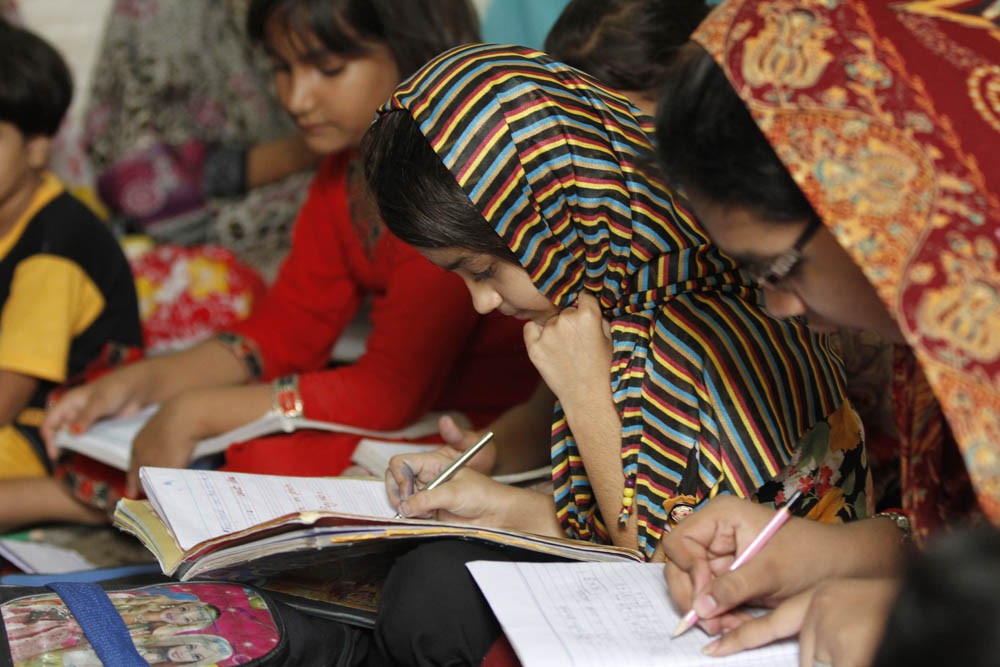
The crisis, originating from the huge gap that exists between the number of seats in public sector colleges and the students that pass the matriculation exam, has been there for many years. The government remains apathetic

It’s happened this year again. Out of the 1,67,131 students who passed the Secondary School Certificate (SSC) in the four districts of Lahore Division -- Kasur, Sheikhupura, Nankana Sahib, and Lahore -- only about 60,000 were able to find admission to the government colleges. Which means that the rest -- a staggering 1,07,131 -- would automatically have to move towards the expensive private institutions or home-based colleges.
The crisis, originating from the huge gap that exists between the number of seats in public sector colleges and the students that pass the matriculation exam, has been there for many years. The government’s apathy is showing.
Although infrastructure-wise, most private colleges are far poorer than the public colleges, they attract students primarily because they are in greater quantity, they have devised better marketing strategies (scholarships, grants etc to top scorers) while charging hundreds of thousands of rupees from the rest of the students.
Ahmad Hayat, whose daughter goes to one of the leading private colleges of Lahore, says the students who are enrolled in public sector colleges have to routinely take evening classes at different academies because they are not satisfied with the level of education and also because they must meet the ever escalating merit criteria of the universities they shall be applying to later. "It’s better that I send my daughter to a private college than having to send her to a government college and an academy at the same time."
On the other hand, Hafiz Abdul Khaliq, President, Punjab Professors and Lecturers Association (PPLA), claims that even today when the private colleges are being run as successful businesses, public colleges remain the students’ first priority. "Private colleges usually give full scholarships to the top scorers of SSC exams who in turn produce great results for them to flash in advertisements and attract other students.
"Though there is a need to increase the number of public sector colleges, what’s more pertinent is that the condition of already existing colleges should be improved in terms of both infrastructure and management," Khaliq tell TNS.
Zafar Anayat Anjum, Director Colleges, Lahore Division, reveals that recently two more new colleges (one for men and the other for women) have been built and should become functional after Eid-ul Azha. He also speaks of recruiting teachers "to minimise the crisis in public sector colleges."
According to sources, 6-7 per cent of students are accommodated by ‘partner schools’ that are upgraded to the college level, whereas 1-2 per cent students go to the colleges associated with universities -- such as Government College University (GCU) and Lahore College for Women University (LCWU). This still leaves behind a lot of students who are forced to quit education after matriculation, mainly because they cannot afford the fees in private colleges.
Sadia, 35, a divorced woman who works as domestic help, says she would never want her only daughter to have the same destiny. "I’ve to bear the expenses of treatment for my ailing mother and my mentally challenged brother. I want to take care of my daughter’s education; she passed her matric exams last year but couldn’t find admission in any government college. But I cannot afford the fees in private colleges."
Public sector colleges follow a specific merit-based criterion for admissions to the intermediate (1st year classes), and the number of students are decided independently by each college, depending upon their teaching staff and infrastructure, whereas private colleges have no merit criterion, except for the few scholarships they need to give to the top achievers.
Besides, in public sector colleges, the annual fee varies from Rs3,000-4,000 only, whereas in a private college, it would start at Rs90,000 or above depending upon the shift (i.e. morning or evening) and the subjects (i.e. science, arts, or computer). This is 400 times the annual fee in a government college.
The idea behind setting up public colleges is that they are for every student. Unfortunately, in Lahore Division, many students are left to wait incessantly till they may or may never get an opportunity to pursue their studies.